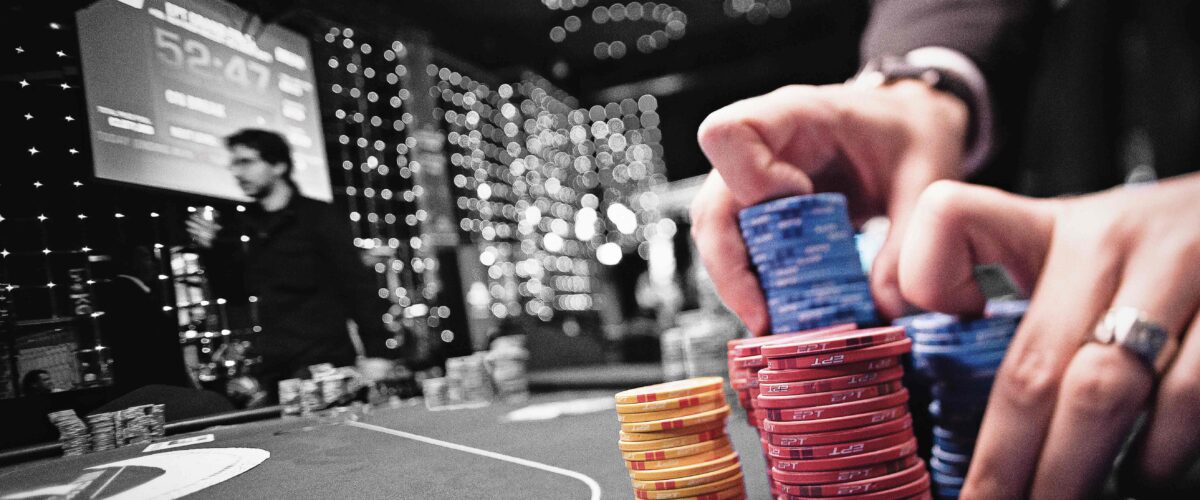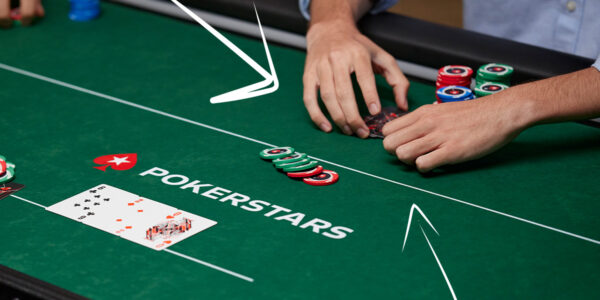Inside the Mind of a Pro – Bluffing Small on the River
Bluffing on the river normally carries with it the image of a full stack flying into the middle. While the most glamorous bluffs, might be the ones where you risk it all, there are some very lucrative opportunities for bluffing much smaller on the river in both cash games and tournaments. Today’s example comes from the 100NL ZOOM pool.
Pre-Flop
Today’s hand features a 3-Bet pot in the classic situation of BU vs. SB. I find myself on the BU and look down at 8♥ 7♥ , an easy open – so I make it $2.25. The SB, who is a regular player in the pool, 3-Bets me to $9.00 and I make the call. This hand will not win me much money but calling is almost certainly better than folding. When I call, the pot will become $19.00 and I will need to recoup my $6.75 investment to break even on this defend. This means getting an average pot-share of 35%. My hand should have around this much equity against Villain’s range since it is very live against many of his hands. Since I am in position, I expect to get a higher pot share than my equity dictates. Moreover, the equity of this hand is very realisable. On boards where it misses completely it will have very low equity and my hand can be folded without sacrificing anything. On boards where my hand connects, the flop will be bad for a lot of Villain’s range, and I will be able to happily call a c-bet.


Suited connectors are easy to realise equity with because they offer draws, which can hang around to see all five cards, and pairs which are often good. Contrast this to a hand like KQo. A lot of the equity of this hand is constituted by the times when K-high is the best hand, but how easy will this be to take to showdown?
Flop
The flop ($19) is the bittersweet A♥ 4♣ 2♥ . Villain should bet relatively often here since the ace favours his range considerably. I would be 4-betting a lot of my AK and some suited Ax as a bluff. In practice, regulars at these limits tend to simplify to betting their entire range here. If they do check anything, it is usually something like A5s, KK, or QQ.
Villain predictably bets $6.00.
I don’t build much of a raising strategy in position in 3-bet pots. Given how much money is already in the middle, it will be easy enough to ensure that the stacks go in where necessary. I will always have the option of betting the turn if Villain slows down. I make the call with the flush draw.
Turn
The turn ($31) is the 9♦ . Villain bets $19 here, which is a play I would expect him to make with a polarised range of good Ax and better for value and then bluffs like flush draws, and if he’s a strong enough player, then also some QJ and JT hands, which block some of my stronger top pairs (AJ-AQ). If Villain only bluffs when he has a flush draw here, he will quickly end up being too value-heavy.
Sometimes my students get this turn spot wrong and assume that they have to fold the flush draw due to insufficient pot odds. Of course, if you look only at the price of the investment compared to the total pot, you are getting nowhere near the odds you need to play, but there is a lot more to this situation than just pot odds.
Firstly, when we do make the flush on the river, we stand to win some extra money from Villain’s stack. While he won’t always pay us off, we will sometimes earn another bet. This is known as our implied odds and helps us call without the right direct pot odds. Another way we might be entitled to more of the pot than our equity suggests is by leveraging fold equity on the river, when Villain was barrelling the turn as a bluff and then check/folds.
Position is a huge part of why I can profitably call again on the turn. If I was out of position, it would be impossible navigate the river as I would not want to build a donking range o bluff when I missed. I would have to fold the turn in this case (or would have raised the flop perhaps)
We make the call, preparing to bluff the river if we have to.
River
The river $69 is the A♠ – not the card we were looking for, but one that is likely to discourage most opponents from bluffing again. This is a great thing when we hold 8-high as it lets us take the pot down more often. As planned, we are going to bluff here, but what sizing is optimal against Villain’s range?
We should immediately discount most medium strength hands from his range. A strong regular is quite unlikely to bet the turn with A7 or KK. My opponent is certainly more polarised than this when he bets two thirds of the pot on the turn. Therefore, most peoples’ ranges here contain either bigger Ax which will not fold to any bet-size or a busted draw/air type hand which will fold to any bet-size. This is a classic inelastic calling range spot.
An Inelastic Calling range is one which does not expand nor contract due to changes in our bet-size. In these spots, a player is likely to call all bet-sizes with one part of his range and fold to all bet-sizes with another.
This means that when we are value-betting, we should shove.
And when we are bluffing, we should bet smaller.
In game theory, Villain should probably start calling some KJ to the small bet, but I’m banking on most people not finding this play. I bet $20.62, which is a far superior play to shoving against most opponents and Villain folds after a little think.
I wonder if he was contemplating the hero call with KJ.














